For information This matter copy by http://www.geneticacupuncture.com link-
How many coincidences need to be found before we can call them causes?
How many coincidences need to be found before we can call them causes?
| "Correlation doesn't imply causation":
we are fully aware of this, and we know well that "a coincidence does not prove a relationship".
A rainstorm can cause a drop in sunlight, but does not turn day into
night, since rainstorms happen during the day or night by chance.
Nonetheless, the similarity between the shape of the
Sanjiao acupuncture meridian around the ear and that of the
duodenum-pancreas makes
us think there're too many coincidences. So
we said to ourselves: "If the duodenum-pancreas meridian has a
role in the morphogenesis of the ear and duodenum-pancreas organ, in
animals with triangular ears (for example cats) the duodenum-pancreas
might also be triangular in shape, and not semicircular like in men".
We performed a web search, whose results are below. In the only
valid picture of a cat's pancreas that
we found, it has distinct right and left lobes, while a man's
pancreas is a whole organ, subdivided into head, body and tail for
didactic purposes. | |||
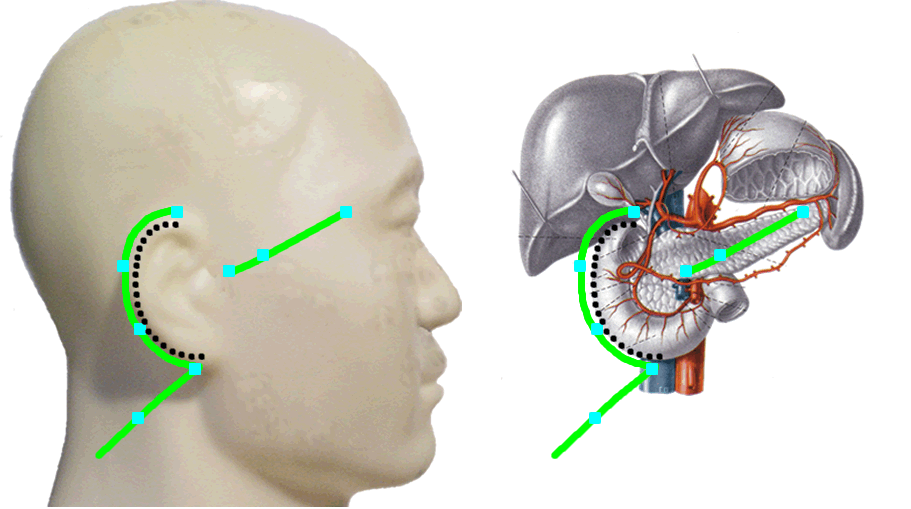 | |||
|
The man's Sanjiao (duodenum) meridian face pathway does not correspond with the shape of cat's ear, because of the feline skull anatomy. A cat's pancreas is quite different from a man's pancreas, and so is its duodenum, which is strictly connected with the pancreas: it is not a semi-circle but a semi-ellipse. Another important fact is that the stomach does not overlap onto the duodenum and pancreas, as indeed happens in men. If the "acupuncture meridians system" exists, and if the Sanjiao meridian exists in the cat's body too, it cannot be as shown here below. | |||
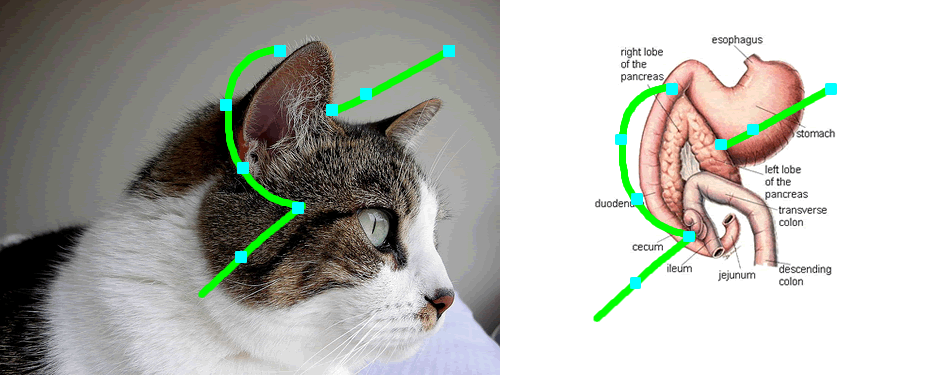 | |||
|
The Sanjiao pathway around the ear and toward the tip of the eyebrow might be as below (two possibilities). | |||
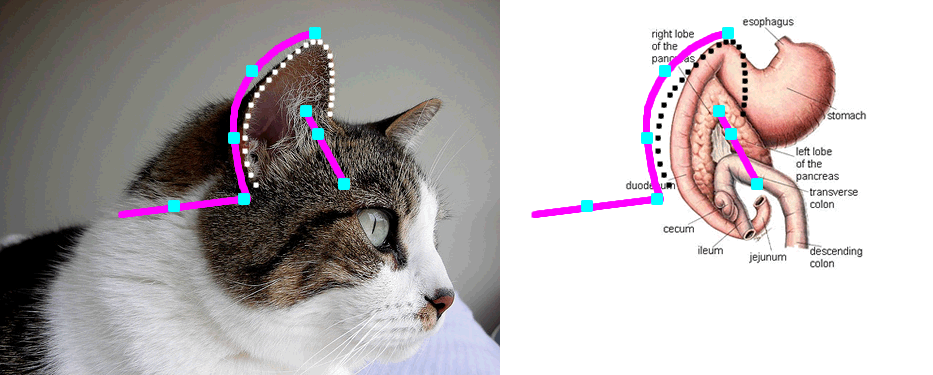 | |||
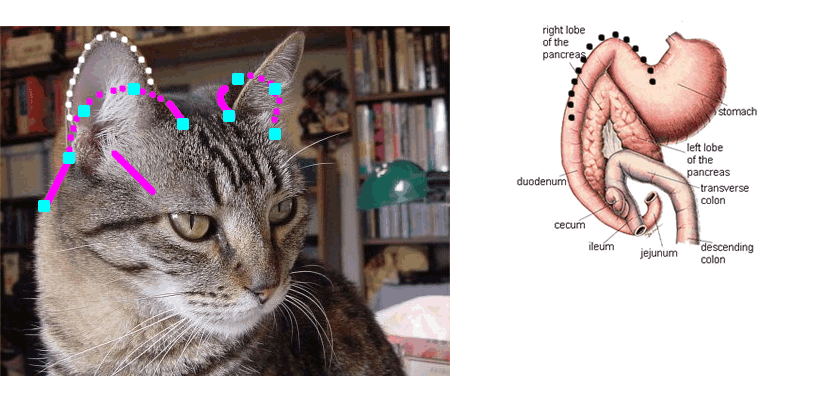 | |||
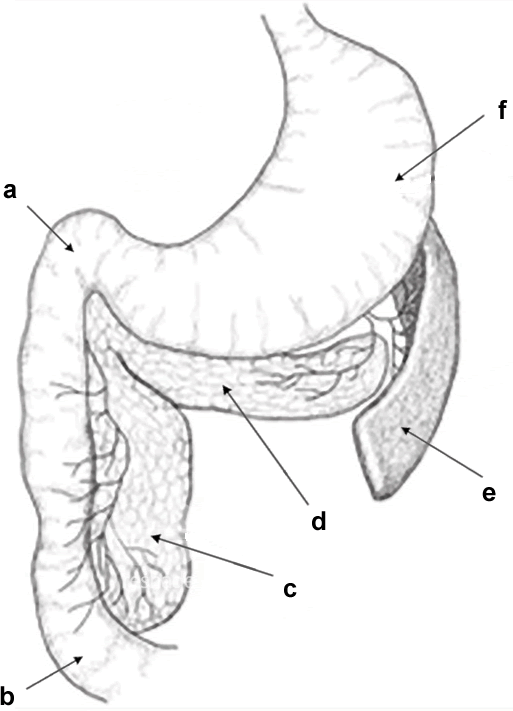
a-b) duodenum; c) pancreas right
lobe; d) left lobe; e) spleen; f) stomach.
|
Pictures of duodenum-pancreas
of a dog (on left) and rabbit (on right).
|
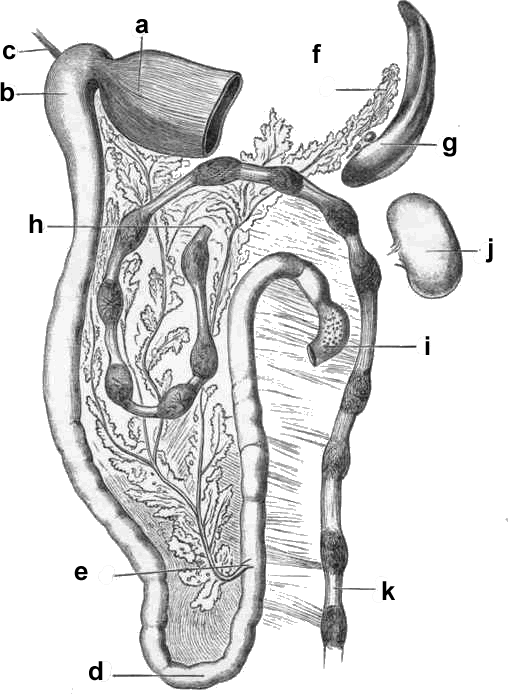
a) pylorus; b) upper duodenum; c)
biliary duct; d) lower duodenum; e) pancreatic duct; f) pancreas
tail; g) spleen; h) colon; i) ileum; j) left kidney; k)
rectum.
| |
No comments:
Post a Comment